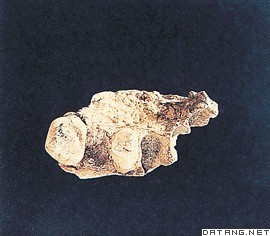1) Changyang dialect


长阳方言
1.
The paper introduces four usages of the form word da in Changyang dialect,which are as a preposition to indicate Location,as a dynamic or aspectual auxiliary to express completion or duration of an action,as a structural auxiliary to connect the complement and as a modal particle to show statement or interjection.
长阳方言中的"哒"字作虚词用时有四种不同用法:作为介词,表示处所;用作动态助词,表示动作已经完成;用作结构助词,连接补语;用作语气词,表示陈述和感叹的语气。
2) Luoyang dialect


洛阳方言
1.
There are some similarities between Luoyang dialect and RP and they are also quite different.
洛阳方言和RP的语音系统有其相同之处,也有很大区别。
3) Yangcheng dialect


阳城方言
1.
The adverbs in Yangcheng dialect include two categories.


阳城方言中的副词,大致包括两种:一是阳城方言里有、普通话里无的副词,二是阳城方言和普通话共有的一些副词。
4) Xianyang dialect


咸阳方言
1.
Such words in Xianyang dialect as 菸,淹,癯,痨,瞀乱,尪羸,捼are the remains of ancient ones.


咸阳方言中的菸、淹、癯、痨、瞀乱、尪羸、捼等词皆古语词之遗留,文章以今咸阳方音为依据,从文献和音义对应入手,分别对其进行疏证。
2.
Xianyang dialect belongs to Guangzhong patch of mandarin Chinese in central plains of China.
咸阳方言属于中原官话关中片。
3.
The degree complement in Xianyang dialect is very complex.


咸阳方言中的程度补语很复杂。
5) Leiyang dialect


耒阳方言
1.
This paper,from the perspective of the features of the words inLeiyang dialect,proves that Leiyang dialect belongs to Kejiahua family after a study about some typical daily words inLeiyang dialect such as"脑"、"背"、"脚"、"滣"、"公"、"婆"、"牯"、"牯佬"etc.
耒阳方言属客家话还是赣语,向来存在分歧。
6) Yiyang


弋阳方言
1.
The Phonological Features of the Yiyang Dialect of Jiangxi Province;


江西弋阳方言的音韵特点
补充资料:长阳人
| 长阳人 中国的早期智人(见智人)化石。1956和1957年发现于湖北省长阳(今长阳土家族自治县)黄家塘乡下钟家湾的龙洞中。包括一件残破的上颌骨和一枚左下第二前臼齿。牙齿的有些特征与现代人相似,但也有一些可能是比较原始的性状。共生的动物化石属于大熊猫-剑齿象动物群。其地质时代为更新世中期之末或晚期之初。
|
说明:补充资料仅用于学习参考,请勿用于其它任何用途。
参考词条
